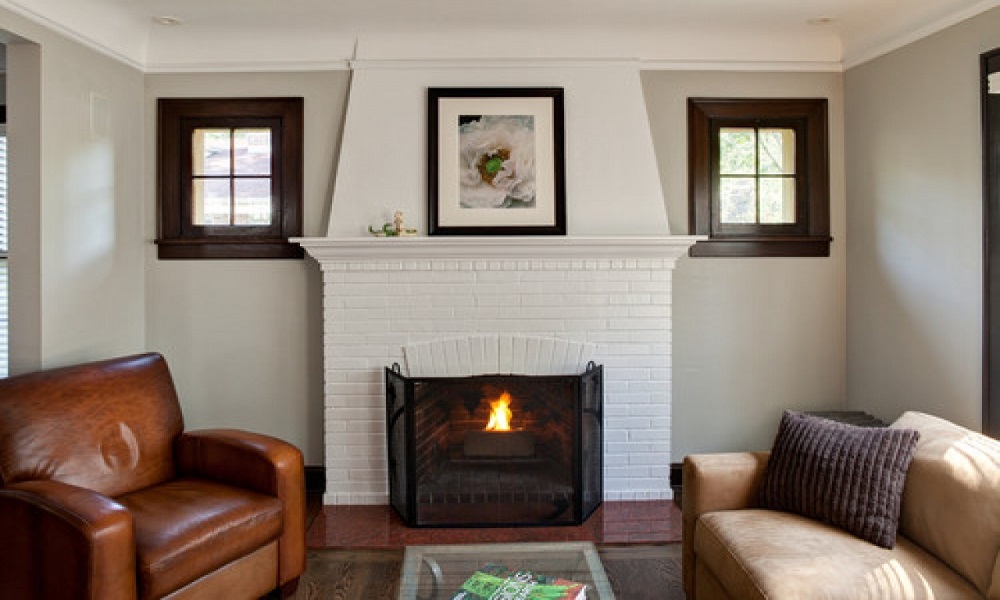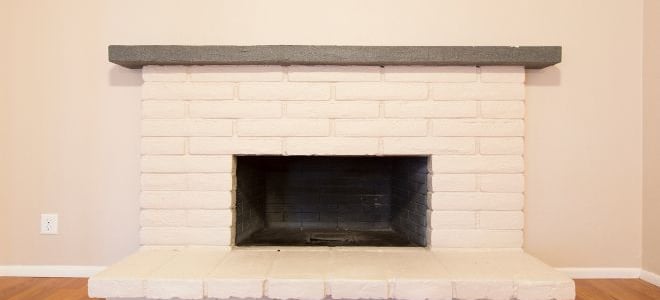A painted brick fireplace remodel offers a dramatic yet budget-friendly way to update a tired or outdated hearth. Fresh paint can lighten a dark space, modernize traditional red brick, or create a striking focal point. Proper preparation ensures the paint adheres well and lasts for years. Start by cleaning the brick thoroughly with a trisodium phosphate (TSP) solution to remove soot, grease, and dust. Repair any cracked mortar joints before painting. Use painter’s tape to protect surrounding surfaces like mantels or walls. These initial steps create the ideal canvas for your transformation.
Choosing the right paint type is crucial for lasting results. Masonry or mineral-based paints allow the brick to breathe, preventing moisture buildup. Chalk-style paints provide excellent adhesion and a matte, velvety finish. For high-heat areas near the firebox, select heat-resistant paint rated for at least 200°F. Primer designed for masonry surfaces improves paint durability and coverage. Consider the room’s lighting—eggshell finishes reflect light beautifully, while matte paints hide imperfections. Quality materials ensure the painted surface withstands temperature changes and cleaning.

Color selection dramatically impacts the room’s ambiance. Crisp white creates an airy, modern look that enlarges small spaces. Soft gray offers versatility, complementing both warm and cool decor palettes. Bold black or navy makes a dramatic statement in contemporary settings. For traditional homes, antique white or cream maintains classic appeal. Test paint samples on an inconspicuous brick area to see how colors appear at different times of day. The right hue should harmonize with wall colors, flooring, and overall decor style.
Application techniques affect the final appearance. Use a high-quality nylon-bristle brush for cutting in around edges. A thick-nap roller covers brick texture efficiently. For a German smear effect, apply paint heavily and wipe some away with a rag before drying. Dry brushing highlights the brick’s texture for a rustic look. Multiple thin coats provide better coverage than one thick application. Work systematically from top to bottom to avoid drips. These methods allow customization from smooth uniformity to intentionally distressed finishes.

Mantel and surround considerations complete the transformation. Painting the mantel a contrasting color defines it as a separate element. Whitewashing the brick while staining a wood mantel creates an appealing texture contrast. For a cohesive look, continue the paint onto adjacent built-ins or shelving. Consider adding decorative tile as a painted hearth border. These complementary treatments ensure the fireplace integrates beautifully with the room’s design.
Maintaining a painted brick fireplace keeps it looking fresh. Dust regularly with a soft brush attachment to prevent buildup in textured surfaces. Clean gently with mild soap and water as needed. Touch up chips promptly to prevent moisture from reaching the brick beneath. Reapply protective wax or sealant annually in high-traffic areas. Avoid abrasive cleaners that could scratch the painted finish. With proper care, the painted surface remains vibrant for years before needing refreshment.

Historical preservation aspects deserve consideration for older homes. Some original brickwork may lose value when painted. If uncertain, test paint on a small section that could be restored later. Limewash offers a reversible alternative that ages gracefully. Document the original appearance before painting for future reference. These thoughtful approaches respect a home’s architectural heritage while allowing personalization.
Creative accents personalize the painted fireplace. Stenciled designs add subtle pattern to solid-colored brick. Metallic glaze highlights mortar lines for dimensional interest. A painted mural above the mantel becomes an artistic focal point. Chalkboard paint on the firebox surround allows seasonal messages or drawings. These imaginative touches make the fireplace uniquely yours while maintaining its refreshed appearance.

Cost comparison reveals painted brick’s advantages over replacement. Professional painting costs significantly less than installing new stone or tile surrounds. DIY versions can transform a fireplace for under $100 in materials. The project requires minimal demolition or construction mess. If tastes change, the paint can be updated more easily than structural alterations. This affordability makes painted brick an accessible upgrade for any budget.
The psychological impact of a painted brick fireplace remodel shouldn’t be underestimated. Lighter colors can make rooms feel more spacious and inviting. A refreshed fireplace often inspires updates to surrounding decor. The visible transformation provides immediate satisfaction and pride in your home. This combination of aesthetic improvement and emotional uplift makes painted brick one of the most rewarding DIY home projects. The renewed fireplace becomes a cherished centerpiece rather than an eyesore to ignore.
How to Add Herringbone Marble Tile to a Fireplace Fireplace makeover, Brick fireplace makeover

A Painted Brick Fireplace, A Winner, and Addicts (not so) Anonymous No. 3 – Addicted 2 Decorating®

Latest Pictures two story Fireplace Remodel Suggestions Most recent Pics Fireplace Remodel ge

How to do a stunning brick fireplace makeover

White Brick Fireplace Makeover FIREPLACE DESIGN IDEAS TAGS: Corner fireplace furniture

Give an old fireplace new life with a modern coat of paint. Update rock or bricks easily and t

Pin on Building a house

How to transform a red brick fireplace with white paint and water White wash brick fireplace

How to Remodel a Fireplace

Related Posts: